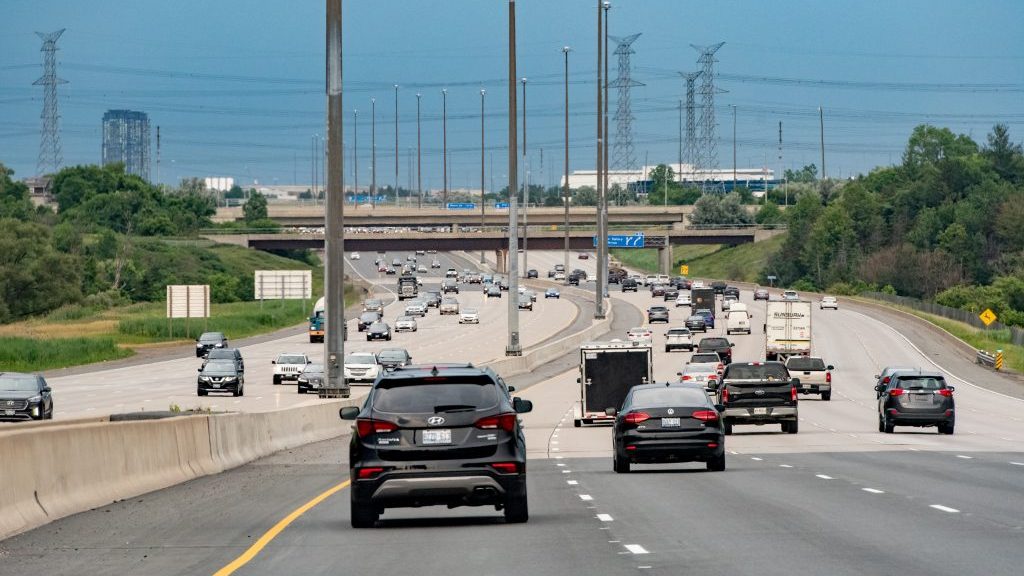Road pricing has proven to be an effective tool to reduce congestion and cut greenhouse gases in major cities around the world but the additional goal of social equity can be elusive, say experts.
Scholars, policy-makers and entrepreneurs from across the continent gathered at the latest Transport Futures conference Dec. 9, an event billed as a Transportation Equity Summit. Among them, Daniel Firth, a principal advisor with WSP Canada, brought special expertise on international road-pricing programs with first-hand experience working recently as the executive director at the Metro Vancouver Mobility Pricing Independent Commission and previously as chief strategy officer at the City of Stockholm’s Department of Transportation.
Firth’s presentation focused on existing road pricing programs in Stockholm and London and on research undertaken for the Vancouver-area Mayors’ Council on Transportation and the TransLink board of directors.
Designing effective, equitable congestion pricing requires considering both societal and private costs and benefits, Firth said. The plan should minimize adaptation costs borne by users as well as system costs and maximize journey and time savings as well as other benefits such as environmental improvements, safety and infrastructure savings.
“One of the difficulties with road pricing is you are charging people for something that used to be free,” said Firth, who was interviewed after his presentation.
“You have to be really clear about what you want to achieve and why. You have to make sure it is part of an overall plan, so if it’s traffic reduction or congestion reduction or it’s addressing CO2 or a combination of all these things.
“Congestion pricing on its own will do some things but it’s way better to put it together with lots of other things. You need to coordinate the plan and you need to be very clear about what it is you want to achieve.”
Firth defined equity as “healing in tandem with societal material redistribution.”
Thus, solutions to transportation problems such as congestion ought to be identified at the same time as solutions to housing shortages, climate change and inequality of opportunity, he said.
The equity lens suggests public transit must be safe, affordable and cost-effective to build and operate. The cities in which transportation systems are built must become more affordable, healthy, walkable, cycle-friendly and accessible for all ages and abilities.
“What I am seeing in transportation is this groundswell of trying to put together the process equity and the outcome equity and in particular find good ways of measuring outcomes so that we can put the information in the hands of politicians and voters so they can make their own decisions,” Firth said.
Equity analysis parameters used in Vancouver’s research on congestion pricing included maximizing the time benefits for dollars spent, relating charges to the availability of alternatives, thoroughly assessing who pays and benefits, and ensuring the cost of correcting any inequality is calculated.
Most congestion-pricing systems — not only in Stockholm and London but also Gothenburg and Singapore — are undertaken with alternative transportation in place, to ensure adaptation is possible and the system is equitable.
A plan must be designed well, it must provide lots of choices, it must be developed in full collaboration with all interested parties, and it must be kept simple, Firth said. Users will more easily be reconciled to congestion pricing if a public owner is seen to be investing the revenues in other infrastructure improvements.
The congestion pricing introduced in London 2003 got high marks because it had a mayoral champion, it was well integrated into existing transportation planning, there was ample public engagement and there were formal equity assessments.
Given those considerations, a toll highway like Ontario’s 407, which is not in public hands so profits enrich private shareholders, is at odds with the ideal.
“It comes back to this question of how good the alternatives are,” said Firth. “You don’t want to be pricing people off the road so they don’t do what they’ve done and they stay at home. So, finding as many ways as possible to replace that trip, through transit, car-sharing, shifting in time, it is minimizing the cost of adaptation.”




Recent Comments